SoFi stock falls after announcing $1.5B public offering of common stock
This week will be dominated by inflation data and the bond auction returning to the 1 PM ET time slot. Today, a 3-year Treasury auction will be at 1 PM ET.
Tuesday will release the highly anticipated CPI report, estimated to have increased by 0.4% m/m, up from 0.3% last month and 3.1% y/y, in line with January. Core CPI is increasing by 0.3% m/m, down from 0.4% in January, while rising by 3.7% y/y, down from 3.9%. The 10-year Treasury auction will follow at 1 PM ET.
Wednesday will bring the 30-year Trueasry auction at 1 PM, while Thursday brings retail sales, estimated to have increased by 0.8% m/m in February versus a decline of 0.8% in January. Also, on Thursday morning, we get PPI, which is expected to have increased by 0.3% m/m flat to last month and increase by 1.2% y/y, up from 0.9% in January. Finally, Friday is the University of Michigan with preliminary March data showing 1-year inflation expectations have risen to 3.1% from 3.0%, and 3 to 5-year expectations have risen from 3% to 2.9%.
As previously noted, inflation swaps and Kalshi suggest that inflation will be hotter than expected on Tuesday morning. Both predict numbers to come in 0.1% hotter than the median analysts’ forecast, at 3.2% y/y and 0.5% m/m.
Since July, the actual CPI rate has met or beaten the CPI swaps 7 out of 8 times, except for November. Meanwhile, the actual CPI rate has met or beaten analysts’ median forecast 5 out of 8 times.
For the most part, the CPI Swap market has just done a better job predicting the y/y inflation rate over the last several months. This suggests that if the swap market is right again, we could see a CPI y/y print of 3.2% or higher come Tuesday morning. So, we will need to watch these numbers closely.
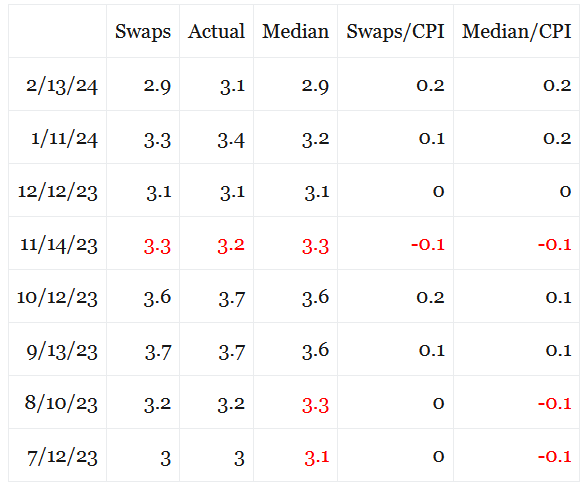
Remember, the NASDAQ fell after the CPI number in February, and it looked ready to crack. Nvidia (NASDAQ:NVDA) essentially saved it. But basically, the NASDAQ 100 closed this past Friday in the same spot it was a month ago, one day before the January CPI report. So, for all the talk about how the market doesn’t care, one could easily say that it may care more than it would seem.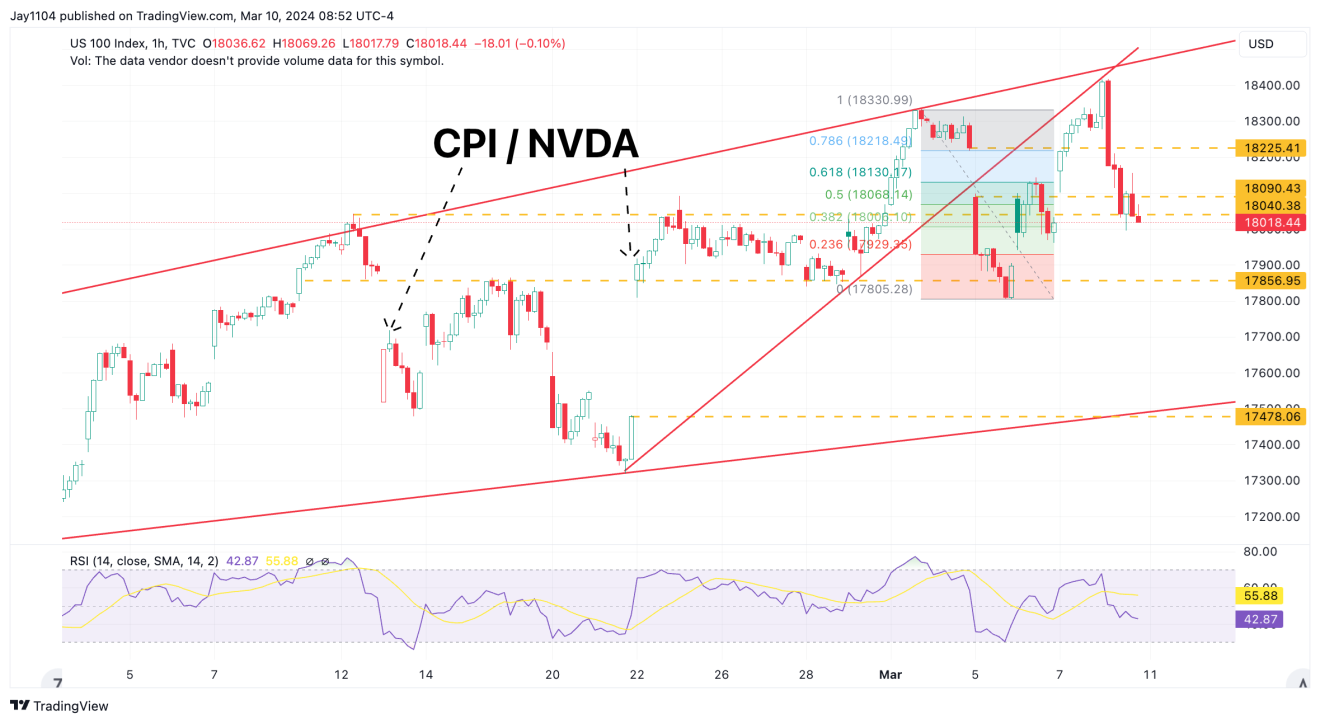
Since February 12, the NASDAQ 100 has been up 56.05 points or 0.31%, with Nvidia contributing 197.06 points to the NASDAQ 100. Basically, without Nvidia’s move, the index would have been lower. One could also easily argue that without Nvidia’s result, AMD (NASDAQ:AMD) wouldn’t have gained 20%, adding 75 points to the NDX either, because the number of stocks up versus down is pretty much near even currently at 52 to 49 winners to losers.
Meanwhile, the NASDAQ 100 had a relatively large bearish engulfing pattern on Friday, which doesn’t always work out and needs confirmation by moving lower on Monday. Still, it is notable, especially considering it came on a sharp intraday reversal.
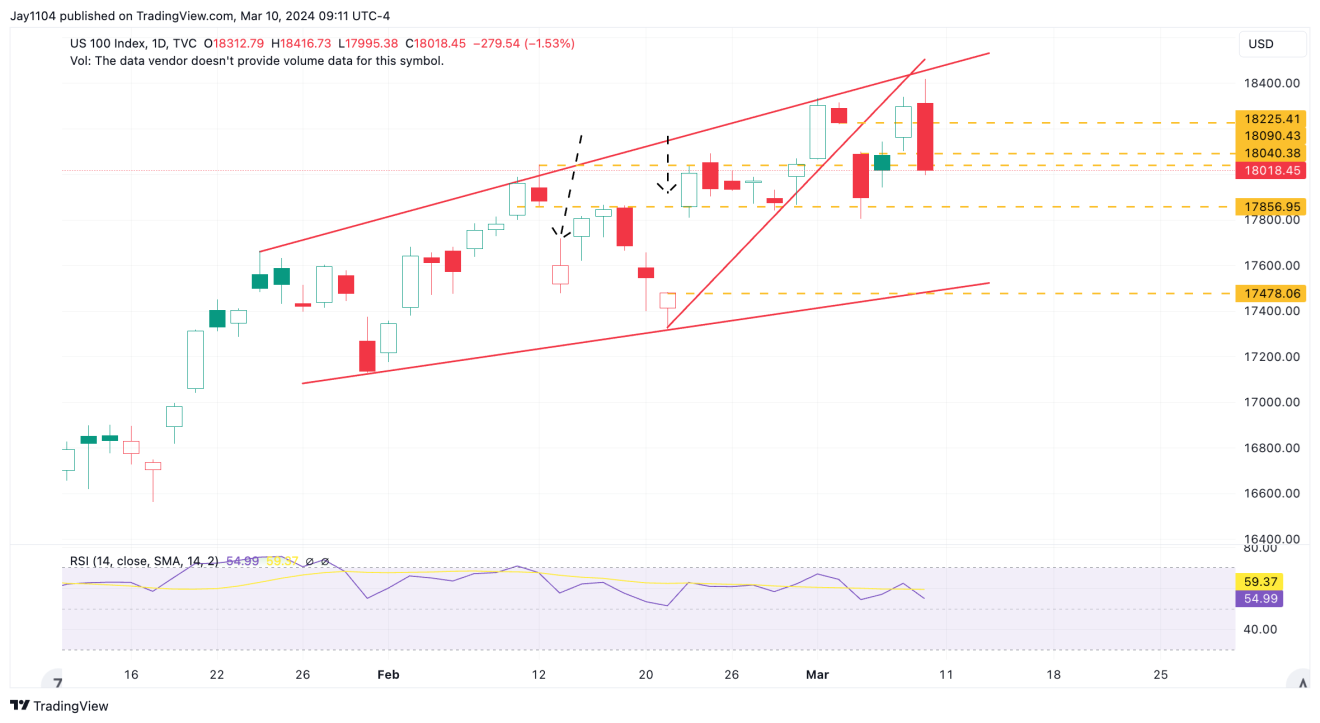
The reversal was driven by Nvidia imploding on itself like a star that goes supernova. The idea is the same: when a star ages and grows large, its mass increases, and eventually, the mass grows so large that the star collapses on itself.
In this case, Nvidia’s price kept rising, pushing its implied volatility higher; eventually, the implied volatility got so high that call buyers could no longer profit, and that essentially ended the squeeze taking place, causing the stock to collapse.
As soon as that IV on the $975 call for expiration on March 15 hit 75%, the stock collapsed.
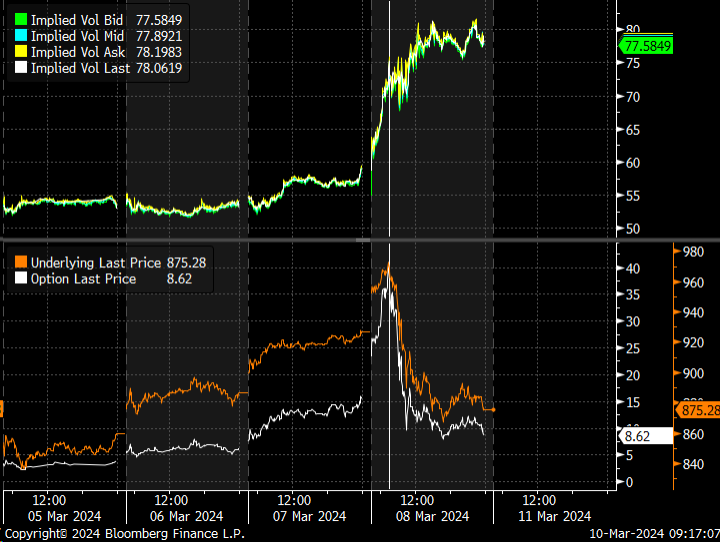
This also created a bearish engulfing pattern on Nvidia on massive volume. While the total volume may have been less than on August 24 or May 25, 2023, the stock is more than double and triple the price of those prior days, which means the notional dollar values that traded were at insane levels. Consider almost 115 million shares of an almost $900 stock trading hands.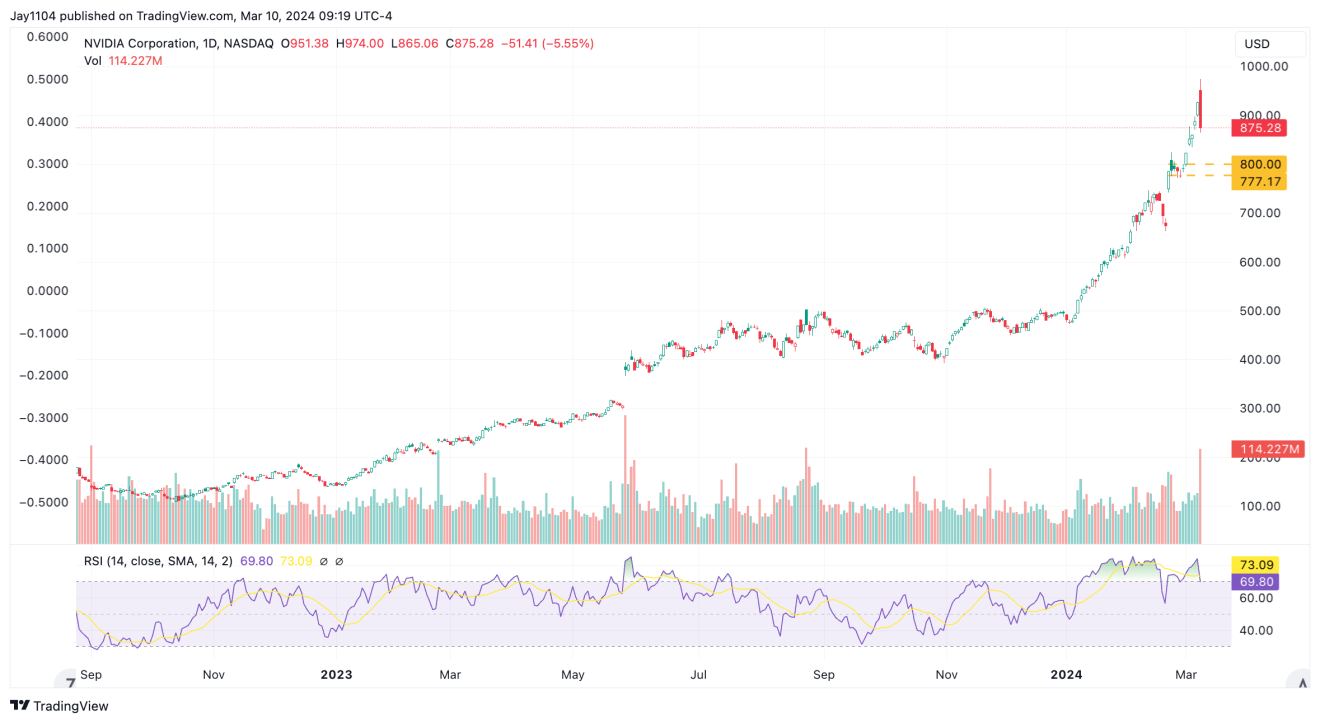
This tells us two things for this week: be mindful that where Nvidia goes likely means the market will follow and that a hot CPI print come Tuesday morning may very well matter, and this time, Nvidia may not be able to save it.
